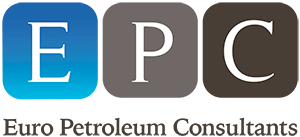Where there is a modern refinery, there is a catalytic process (or processes). That said, the current market structure for refining catalysts features four types – FCC, hydroprocessing, alkylation and reforming – that comprise 95% of the market in monetary terms. Meanwhile, there is another group of catalytic processes out there that could, provided it gains traction among refiners, fundamentally change the catalyst market structure. We mean the slurry processes.
An unmatched advantage of slurry processes is that they provide very high – up to 95% – yield of light petroleum products from the heavy bottoms. The process catalysts come in the form of fine powder mainly made up of sulphides of transition metals, such as nickel, vanadium and molybdenum. Actually, the cost of these catalysts for refiners is not significant, up to $1.5 per barrel of feedstock as per the estimates of process licensors. Nevertheless, should slurry processing become popular, the catalysts may take up a sizable share of the market.
Today there are several major global companies specialised in licensing refining processes that announce they are ready to provide slurry processes for refiners. Of late the true newsmaker in this field is without doubt Eni, the Italian refiner and licensor. This year the Italian company has been awarded two contracts for their slurry technology named - EST technology, both for Chinese clients.
First, in January 2018, came the official announcement that Eni has sold the license and basic engineering project for the construction of a refining plant based on EST technology to Sinopec, the world’s largest operator in the refining sector. Located in Maoming, Guandong province, the plant will replace the existing petroleum coke production line. Sinopec sees it as part of global efforts to contain CO2 emissions. Also, by constructing and launching this unit, the Chinese company will gain significant environmental benefits in compliance with the new IMO regulations concerning sulphur content in bunker fuel.
Then in March 2018, Eni announced it had been awarded a contract by Zhejiang Petrochemicals – the license for the construction of two refining lines based on EST technology on the island of Zhoushan, in Zejiang province. The lines are to become part of a new refinery with a capacity of 40 million tons per year. It is worth mentioning that initially, the plan was to construct a delayed coker unit, however, just like with the Maoming refinery, the company opted for a slurry process for environmental reasons.
The total capacity of the licensed units for Sinopec and Zhejiang Petrochemicals amounts to 8.5 million tons per year. The completion, as per plan, is around 2020.
There is another project that may, in case of success, create an impetus for the extensive use of slurry processes in the world – the Heavy Residue Deep Conversion Complex that is being built at the Nizhnekamsk Refinery, an 8 million ton per year plant in Russia. The core of this complex is a slurry hydrocracker - the Veba Combi Cracker (VCC) process, licensed by KBR. The unit is designed to process mixed feedstock – 2.7 million tons per year of vacuum residue and 1.7 million tons of VGO. At the time of writing, the company has already commissioned the unit, but it is processing VGO only. The expectations are that the refinery will shift to heavier feedstock around mid-July this year.
Both licensors, Eni and KBR, are no newcomers in the commercial use of the slurry processes. Eni operated a slurry process unit with a capacity of 1.2 million tons per year at its refinery in Sannazzaro, Italy from September 2013 until December 2016. As for KBR, it has a unit with a capacity of 450,000 tons per year that processes decant oil and coal operating continuously since September 2017 at a YCPC plant in Yulin, China.
Apparently, the catalyst market structure will not change just thanks to the success of several projects using slurry processes. However, bearing in mind the ambitious goals of the projects – the increased yield of light petroleum products, the production of low-sulphur bunker fuel and curbing of CO2 emissions – the success in constructing and operating of the units announced can spur extensive use of slurry processes. As these technologies develop further, it may radically change the approaches to bottom-of-the-barrel processes at the refineries, and hence, change the refining catalyst landscape.
To find out more about modern refining catalysts and bottom-of-the-barrel technologies, please do not miss opportunities to attend EPC’s specialised events: BBTC MENA (Bottom of the Barrel Technology Conference) and ME-CAT (Middle East Catalyst Technology Conference) that will be held on December 3-6, 2018 in Bahrain.
 Euro Petroleum Consultants is a technical oil and gas consultancy with offices in Dubai, London, Moscow, Sofia and Kuala Lumpur. Euro Petroleum Consultants also organises leading conferences and training courses worldwide. For further details please visit www.europetro.com.
Euro Petroleum Consultants is a technical oil and gas consultancy with offices in Dubai, London, Moscow, Sofia and Kuala Lumpur. Euro Petroleum Consultants also organises leading conferences and training courses worldwide. For further details please visit www.europetro.com.
Published by:


